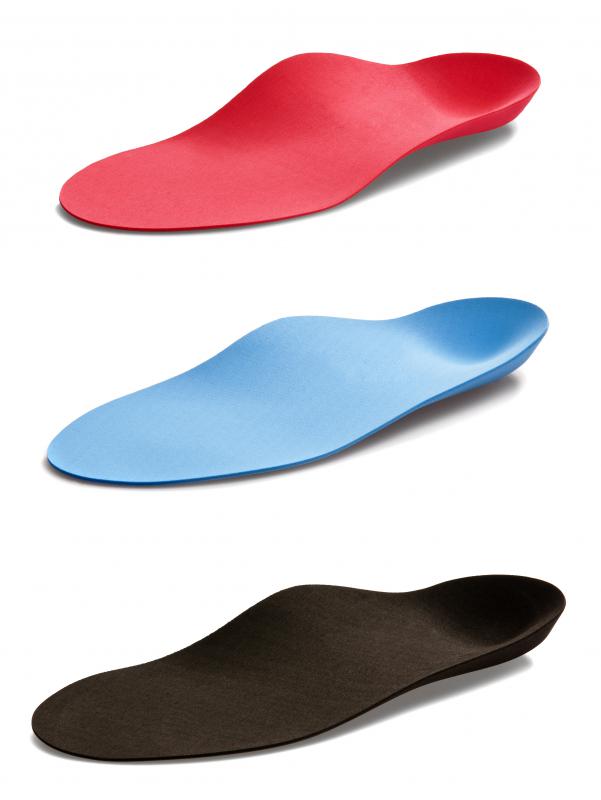At WiseGEEK, we're committed to delivering accurate, trustworthy information. Our expert-authored content is rigorously fact-checked and sourced from credible authorities. Discover how we uphold the highest standards in providing you with reliable knowledge.
What Are the Different Types of Pronation Treatments?
Pronation occurs when the heel of the foot is oriented inward or outward, rather than staying in line with the legs and the rest of the body as it should. This condition can lead to other painful conditions such as collapsed arches or plantar fasciitis, and the muscles of the legs can begin to feel pain as a result of the pronation. In order to correct such issues, pronation treatments have been developed to help correct the orientation of the feet and to support the arches. Corrective footwear and certain exercises are common pronation treatments, though many others exist as well.
When the heels are oriented inward, the condition is known as overpronation and the arches of the feet are more at risk of collapse, leading to pain and altered mobility. Pronation treatments for overpronation may include the use of insoles with high arch support or corrective footwear. In many cases, simply buying a new pair of shoes with more support in the arch will help correct overpronation, though this is not always the case. If these pronation treatments do not work, a trip to the doctor may be in order so he or she can recommend more aggressive treatments or a physical therapy regimen.

When the heels of the feet are oriented outward, underpronation is occurring. This can also lead to painful conditions that affect the bones and muscles of the feet and legs, and left untreated, it can lead to chronic pain. Pronation treatments for underpronated feet are similar to those of overpronated feet, though the type of support needed for each foot will be different. In this case, it is likely that orthotics will be used; orthotics are corrective devices such as specially designed insoles or braces that will help reduce pronation and support the muscles and bones of the feet in the process. Orthotics are also commonly used for overpronated feet.

Paying attention to one's walking or running stride can also help treat pronation. It is possible to correct the condition by attempting to alter one's gait, but it is important to do so under the guidance of a professional so the person suffering from pronation does not end up worsening the condition or causing other painful problems in the feet and legs. This may be a viable treatment for runners and other active people, though again, it is exceptionally important to do this with professional guidance, especially if the person is athletic.
AS FEATURED ON:
AS FEATURED ON:














Discuss this Article
Post your comments